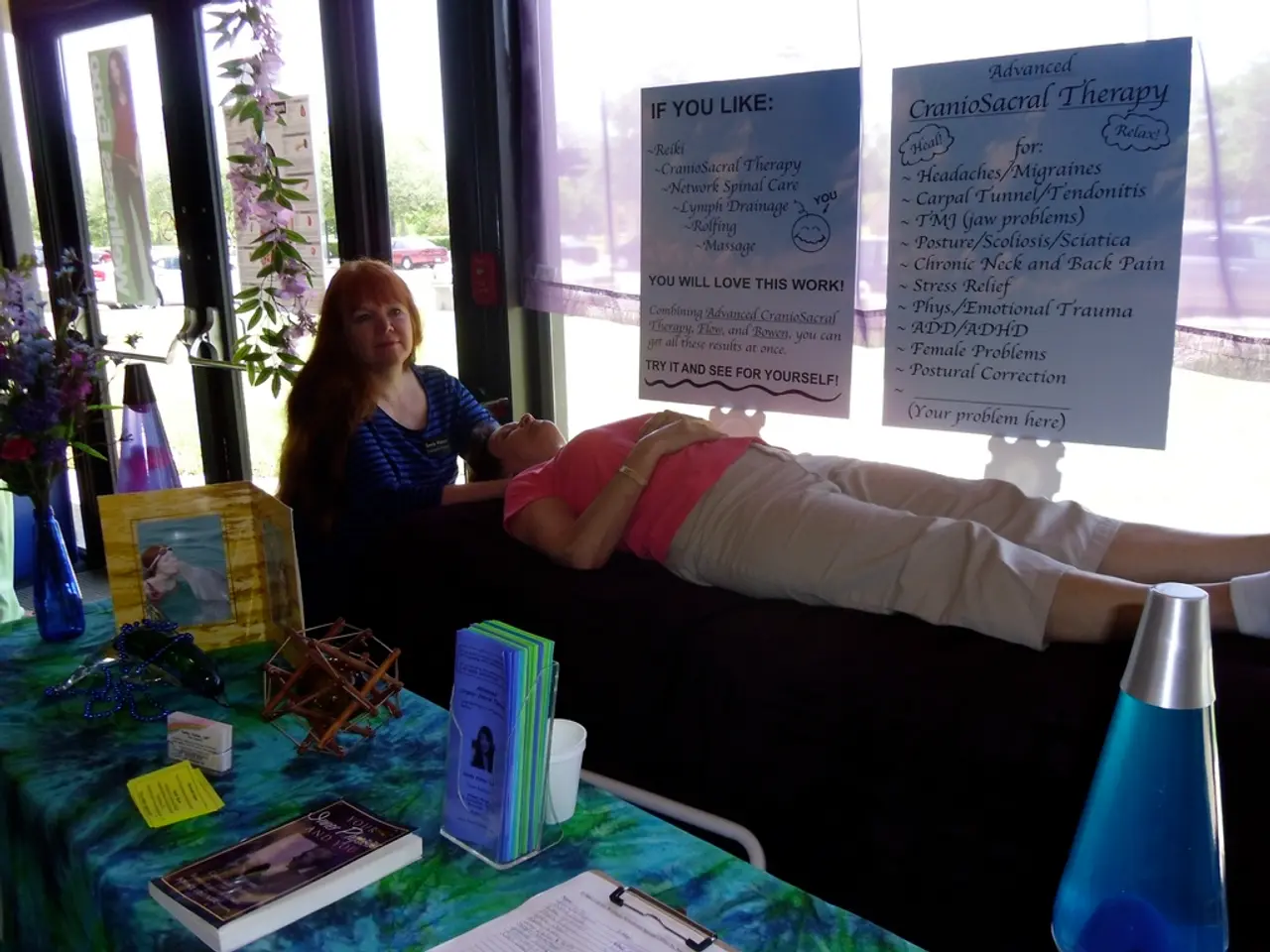Psoriatic arthritis leading to touch aversion: Understanding origins and managing associated difficulties
News Article: Understanding and Overcoming Touch Avoidance in Psoriatic Arthritis
People with psoriatic arthritis (PsA) often experience pain and tenderness in their joints, leading some to avoid physical contact to reduce discomfort. This behaviour, known as touch avoidance, can have significant impacts on personal relationships and quality of life.
Touch avoidance in PsA can stem from several causes. PsA is an autoimmune condition linked to psoriasis that causes joint pain, stiffness, swelling, and skin symptoms like red, scaly patches. The pain, tenderness, and inflammation in joints and surrounding connective tissue can make physical touch uncomfortable or painful, motivating avoidance. Psoriasis skin lesions themselves are sensitive, dry, sore, and prone to cracking or bleeding, which may evoke discomfort from touch. Psychological factors may also contribute, such as stress or emotional distress associated with chronic pain and visible skin changes.
The consequences of touch avoidance can be far-reaching. It can contribute to social isolation and emotional distress due to decreased physical contact with others, impacting mental health. Touch avoidance may interfere with physical therapy or joint care routines involving massage or touch, possibly worsening joint function or progression of symptoms. Avoidance of touch can reinforce muscle weakness and joint stiffness by limiting movement and rehabilitation activities. Due to joint deformities, pain, and balance issues, individuals with PsA have an increased fall risk and impaired mobility, which can be exacerbated without proper physical engagement.
Early diagnosis and treatment of PsA by a rheumatologist can reduce inflammation, decrease pain, and improve joint function, thereby reducing touch sensitivity. Using anti-inflammatory medications and biologics can control immune activity and improve symptoms. Physical therapy tailored to PsA can maintain joint flexibility and muscle strength while minimizing painful stimuli from touch. Skin care routines including moisturizers can reduce psoriasis-related skin discomfort, making physical contact less painful. Psychological support and counseling can address the emotional impact and help develop trust and comfort with physical touch. Environmental management such as avoiding triggers like extreme weather or barometric pressure changes may alleviate symptom flares that increase sensitivity. Gradual desensitization techniques or gentle touch therapies under professional guidance might help reduce touch avoidance behaviour.
The American Academy of Dermatology (AAD) lists gentle exercise, such as yoga and Pilates, as a treatment option for PsA. A doctor can recommend strategies to help people cope with symptoms and manage touch avoidance, and may prescribe painkillers or point individuals toward support groups for emotional support.
According to the results of a 2017 study, higher levels of touch avoidance are linked to lower quality of life, depression, and more severe psoriasis symptoms. Close family members, friends, or others with PsA can form part of a support system. If someone with PsA experiences touch avoidance, flare-ups, or new symptoms, they can speak with a healthcare professional for help and support.
The National Psoriasis Foundation (NPF) emphasizes the importance of open communication and a support system to cope with the effects of PsA. Treating and managing PsA symptoms may help people overcome touch avoidance. Resting during flares, physical therapy, massage, braces and splints to support the joints, and medication (like disease-modifying antirheumatic drugs and nonsteroidal anti-inflammatory drugs) are also treatment options for PsA according to the AAD.
In summary, touch avoidance in psoriatic arthritis arises mainly from inflammation-induced pain and skin sensitivity. It can lead to social, physical, and emotional challenges. Early medical management combined with physical, dermatological, and psychological approaches forms the foundation of coping strategies.
- The pain and tenderness in the joints experienced by people with psoriatic arthritis (PsA) can make scientific approaches towards treatments, such as physical therapy and medications, essential in reducing touch sensitivity.
- Chronic diseases like PsA, including psoriasis and its associated skin symptoms, can require complex treatment regimens that encompass various health-and-wellness aspects, such as skin care, therapies-and-treatments, and mental-health support.
- Psychological factors, like stress or emotional distress, can contribute to touch avoidance in people with PsA, underlining the importance of mental health in managing chronic diseases.
- The consequences of touch avoidance can impact not only the physical health of a person with PsA but also their social and emotional well-being, as it may lead to isolation and decreased personal relationships.
- A proper understanding of the connections between medical-conditions like PsA, treatment options, and the associated life challenges can empower individuals to seek the support they need from family, friends, or professional resources, such as the American Academy of Dermatology (AAD) and the National Psoriasis Foundation (NPF).
- Effective treatment and management of PsA symptoms can contribute to overcoming touch avoidance, improving quality of life, and enabling greater engagement in health-and-wellness activities, such as gentle exercise like yoga and Pilates.




